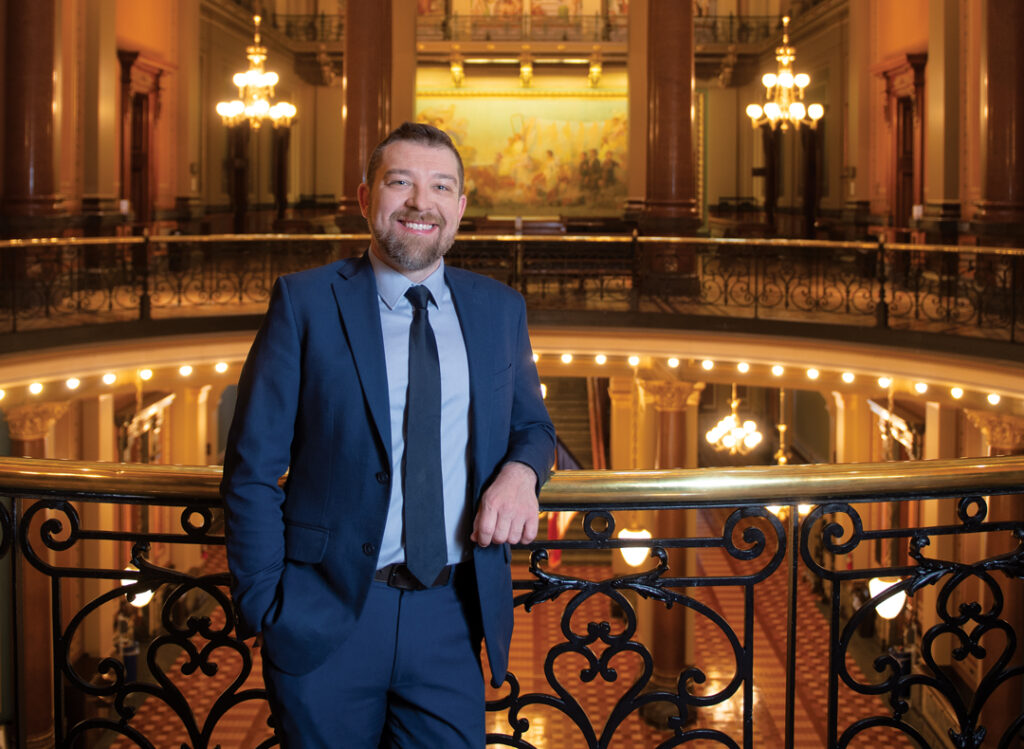The Elbert Files: A brief history of ethanol

DAVE ELBERT Feb 10, 2021 | 5:12 pm
3 min read time
637 wordsBusiness Record Insider, Opinion, The Elbert Files
Forty years ago, Archer Daniels Midland Co. announced plans to build the world’s largest ethanol plant in Des Moines. Ground was never broken and ADM’s elaborate plans soon faded, but four decades later that announcement provides an interesting window into an industry that became an Iowa obsession.
On Oct. 31, 1980, ADM Chairman Dwayne Andreas told the Des Moines Register his company would build a $250 million ethanol plant in Des Moines that would employ 100 people.
It would be built in southeast Des Moines, north of the Des Moines River, one mile due east of today’s James W. Cownie Soccer Park. To this day, the site remains farmland.
The ADM plant was projected to be the largest ethanol plant in the world, capable of producing 600,000 gallons a day of corn-based ethanol. Mixed with gasoline, the ethanol would create 6 million gallons of a fuel blend called gasohol.
Ancillary operations would include greenhouses where tomatoes, lettuce and cucumbers could be grown year-round, drawing on the waste heat and carbon dioxide from ethanol production. Other reusable byproducts would include corn oil and high-protein animal feed.
The plant would be a win-win situation. It would be bigger than the combined operations of three other ADM ethanol plants: one in Decatur, Ill., which is ADM’s hometown, one in Peoria, Ill., and a third plant under construction in Cedar Rapids.
State officials said it would be the largest industrial development on one site in Iowa, easily topping the size, although not the employment, of the auto assembly plant Henry Ford built at 1880 Grand Ave. in 1918 and the Solar Aircraft plant built during the 1960s on Bell Avenue.
ADM’s Des Moines plant would consume up to 80 million bushels of corn a year, enough to raise the average price of corn in Iowa as much as 5 cents a bushel, Andreas predicted.
At the time, the ethanol industry was in the early stages of rebirth. Alcohol had been used as a fuel for internal combustion engines for well over 100 years but had fallen out of favor in the early 1900s as gasoline became more efficient and less costly.
During the 1920s, ethanol was blended with gasoline to create a higher-octane fuel called gasohol. Fuel shortages during World War II also boosted production, but demand for gasohol fell after the war.
Renewed interest in ethanol began in the 1970s when the oil embargo by Middle East suppliers resulted in gasoline shortages and sharp price increases. Ethanol was seen as a way for the United States to achieve energy independence, and tax incentives were created to encourage its use.
But it was an uneven advance. After taking office in 1981, President Ronald Reagan, as part of his budget balancing effort, cut the legs out from under an ethanol incentive program that would have provided up to $1 billion in federal loans and loan guarantees for ethanol plants, including the one ADM wanted to build in Des Moines.
By 1982, the farm crisis had begun, brought on by problems that included a decline in exports and falling commodity prices. Farmland values plummeted and the crisis continued into the late 1980s, forcing wide-scale changes in farming and rural life.
Infrastructure supporting rural health care, retail and educational operations began to crumble and continued to cycle down, long after the 1980s farm problems ended.
One of the more interesting forecasts during and after the 1980s was that ethanol production would eventually rotate away from using corn and rely instead on less valuable inputs, including wood and crop residue. But that never happened.
Nor, despite years of political battles that often spilled into the Iowa caucuses, were ethanol advocates ever able to achieve equal footing with oil lobbyists, although the two industries may now become allies in the battle against electric vehicles.









